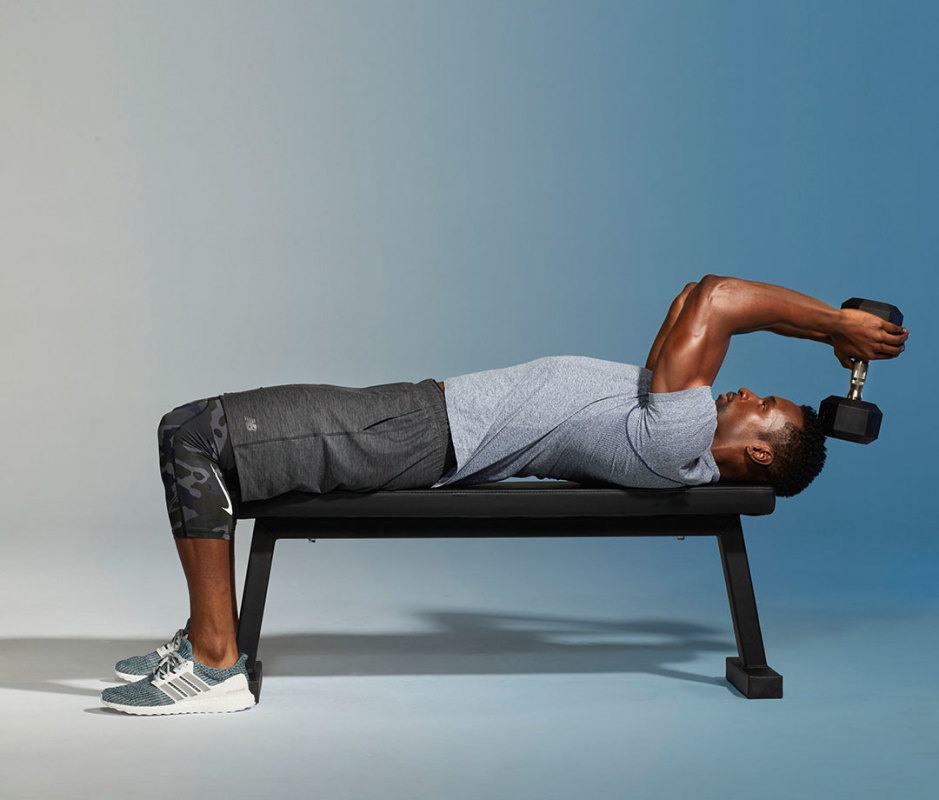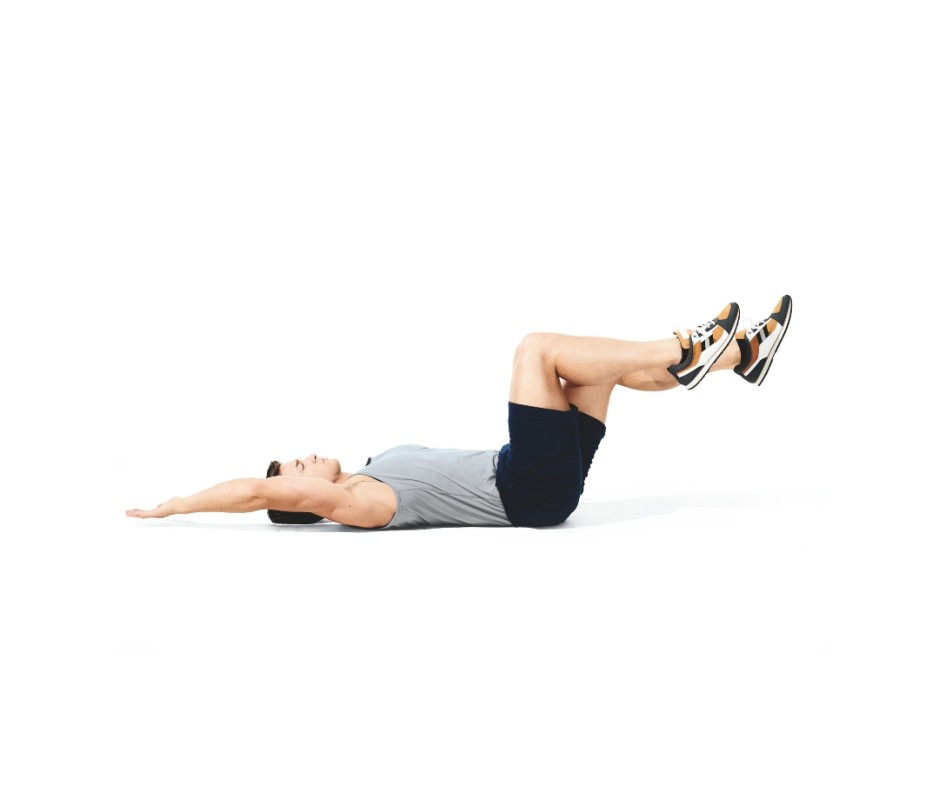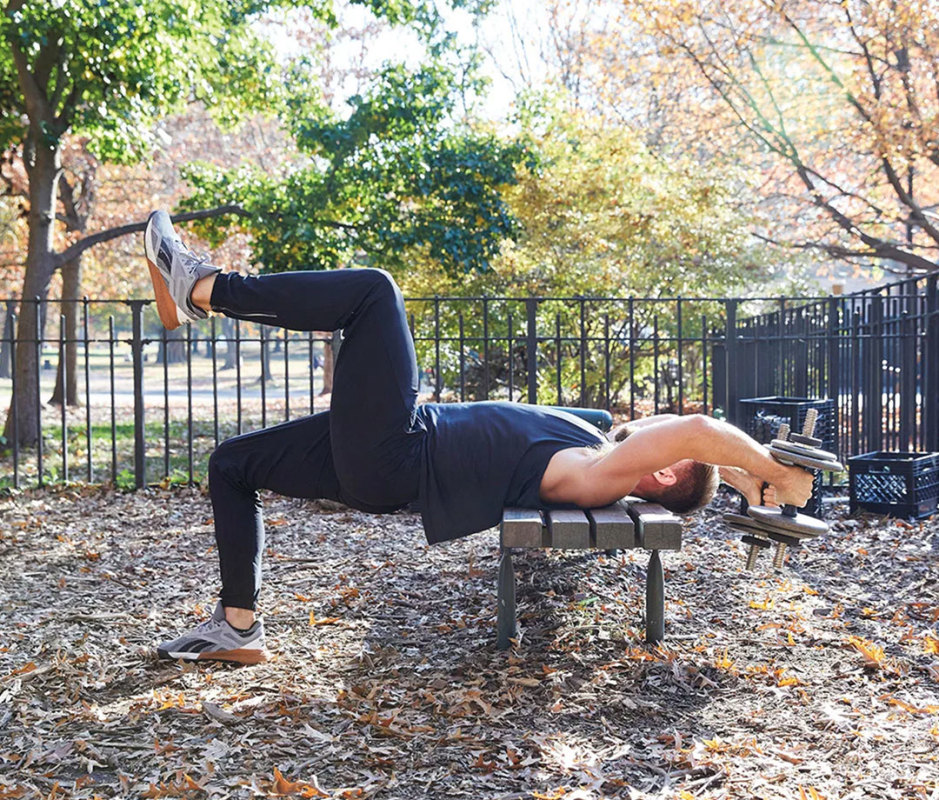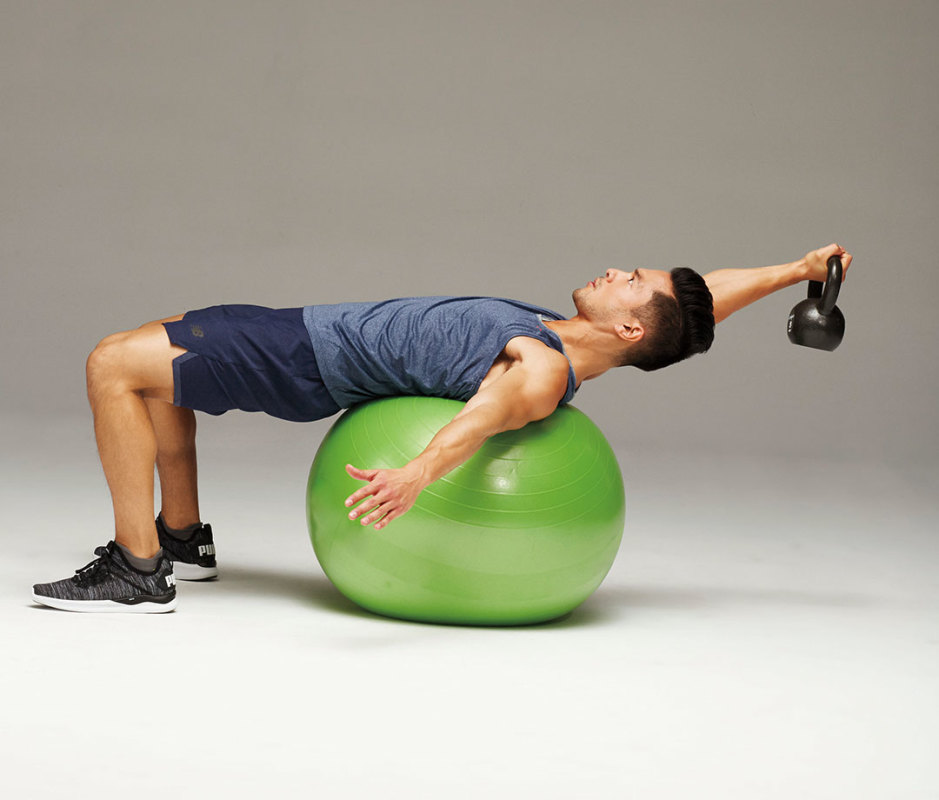Few moves deliver as much bang for your buck as the pullover. This classic strength builder doesn’t just pack size onto your back—it reinforces good posture by keeping your spine stable, opens up the chest, and boosts flexibility to counteract the slouch-inducing effects of daily life. A staple of bodybuilding since Arnold Schwarzenegger’s 1970s heyday, the pullover remains a foundational lift for building strength, size, and mobility all in one.
Plus, the exercise “trains both the chest and the back in one movement,” says Nate Rodgers, a certified personal trainer at Life Time Lakeshore-Irvine. “Most exercises focus on one or the other, but the pullover uniquely hits your pecs, lats, and serratus, depending on how you perform it. It’s one of the rare moves that can actually build upper body width and depth at the same time.”
Dumbbell Pullover Benefits
The dumbbell pullover improves strength and coordination between the muscles of your upper back and triceps. It also works the lats as an effective core strengthening exercise. By moving your shoulders through a controlled range of motion above your head, you’ll work the core stabilizer muscles, increasing mobility and helping to prevent shoulder injury.
“Pullovers help open up the chest and stretch tight lats, which can pull the shoulders back into better alignment,” Rodgers says. “If you sit a lot or have a desk job, they’re a smart addition. The controlled overhead movement encourages stability through the rotator cuff and scapular stabilizers. It’s great for guys who press a lot and feel tight or achy afterward.”
Bottom line: If you want to build a broad chest and back and increase upper-body strength, the dumbbell pullover should be part of your routine.
Related: The 3/7 Training Method That Builds Muscle Shockingly Fast
What Muscles Do Dumbbell Pullovers Work?
You’ll feel it in the upper back, lats, and triceps. It’s possible to change your grip to better isolate your chest or back. By rotating the elbows in and tucking them closer, you’ll better target your back. Flaring the elbows out isolates the chest.

Justin Steele
How to Do a Dumbbell Pullover
- Lie flat on a bench holding one or two dumbbells with arms straight over your chest or eyes.
- Keeping your upper arms in the same position, lower the weight until your elbows are bent 90 degrees.
- Now, lower your upper arms until they’re parallel to the floor.
- Pull your arms back to the starting position, straightening your elbows on the way up.
Pro Tip
The key is to drop your hands first so that your elbows point toward the ceiling, then drop your elbows. Be sure not to extend your elbows as you would during a skull crusher. Keep your hips flat on the bench to maintain proper form and prevent stress on your back. Start with a light weight to keep from using your biceps. You want your chest, lats, and triceps doing the work and deriving the benefit. Plus, you don’t want to risk clocking yourself in the face with a heavy weight as it travels above your head.
Best Dumbbell Pullover Variations
While the classic dumbbell pullover does wonders for your stability, posture, and upper body gains, if you’ve mastered the move, it might be time to add a variation to the mix.
How to Make a Dumbbell Pullover Easier
If you have shoulder problems or need to make the dumbbell pullover easier, just do the first half of the movement, bending your elbows and then straightening them. Some people also find it easier to do the move with one dumbbell held with both hands instead of a dumbbell in each hand. (Not to be confused with one-handed pullovers, a more challenging variation).
How to Make a Dumbbell Pullover Harder
When you remove a point of stability, you force your core to light up and aid your working leg in maintaining balance. There are actually a couple ways to execute single-leg dumbbell pullovers.
Hardest Dumbbell Pullover Variation
If you’re looking to add even more difficulty, try performing the move on a stability ball. If you’re new to working on a ball, start with light weight to get the movement down first, then add. By working on an unstable surface, you’ll recruit more of your glutes and core stabilizer muscles than you would on a bench.
How to Do the Dumbbell Pullover With Leg Extension

James Michelfelder and Therese Sommerseth
- Start the move with hips and knees bent to 90 degrees.
- Extend the hip and knee of one leg until your leg is straight while you lower the opposite-side dumbbell by bending elbow to 90 degrees. Continue lowering from your shoulder until weight is behind your head.
- In one motion, lift your leg up while driving your elbow up, then straighten your arm to return to the starting position. Do all reps on one side, then switch.
How to Do the Single-Leg Bridging Dumbbell Pullover

Marius Bugge
- Line your upper back against a bench and bridge hips up, holding dumbbells with palms facing each other.
- Lift one leg off the floor—knee bent, foot flexed, hips level—then lower dumbbells behind your head. Do all reps on one side, then switch.
How to Do a Stability Ball Pullover

Justin Steele
- Lie on ball, feet wide, neck engaged, hips high, a light (10- to 15-pound) kettlebell in right hand pressed over chest, and left arm out to start.
- With arm straight, lower kettlebell behind head, until biceps is near ear, stopping before it reaches shoulder height.
- Reverse to start for one rep. Do all reps on right side, then switch.
How to Add a Dumbbell Pullover Into a Workout
The dumbbell pullover is a versatile move when it comes to organizing your workout. As an upper-body push, it fits nicely between upper-body pull exercises or lower-body moves. It’s a mainstay of chest/back workouts and triceps-specific routines.
